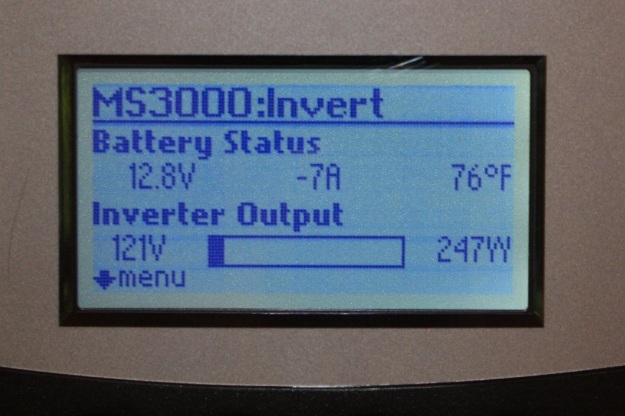With the new found ability to accurately monitor the state of our battery bank, let’s take a look at how well the Xantrex Control Panel stacks up against the Victron BMV 600s. I could simply state the Victron is better, but I thought it would be best to run a simple test. I turned off the solar charger and other loads… OK, I forgot to turn of an LED light and the motion sensing LED spotlight in the garage so all my BMV 600s readings are in err by 0.5 A (higher than they would be if the lights were off).
A reading with the inverter simply “idling” with load sense off.
Now with a moderate load.
And finally with as much stuff turned on as I could find.
Ok fine: The Xantrex meter wasn’t all that far off after all… sort of. By taking a look at the Battery Status Amp value and comparing it against the BMV 600s value it appears that the Xantrex monitor thinks it is using about 3 more amps than it really is. This discrepancy could simply be because the BMV 600s is smarter and automatically recalibrates this parameter from time to time (I turned off all the loads in order to zero this setting (“I”) on the BMV-600s and it did it for me – I thought that was pretty cool).
But this is what doesn’t make any sense. Going off the Xantrex panel alone:
- under a heavy load: 11.7 V x 216 A = is 2527 DC Watts.
- under a moderate load: 12.4 V x 63 A = 781 DC Watts.
- under no load: 12.8 V x 7 = 90 DC Watts.
Either our inverter can magically make energy out of thin air and Xantrex has just solved the world’s energy crisis and is simply choosing only to apply this technology to their inverter line as some part of a conspiracy with the government and Big Coal, or the more likely scenario; the Watt readout on the Xantrex monitor isn’t good for beans.
From now on we will gauge battery bank status by Amps and Amp Hours. Never again will we look at the Inverter Output Watts readout.






